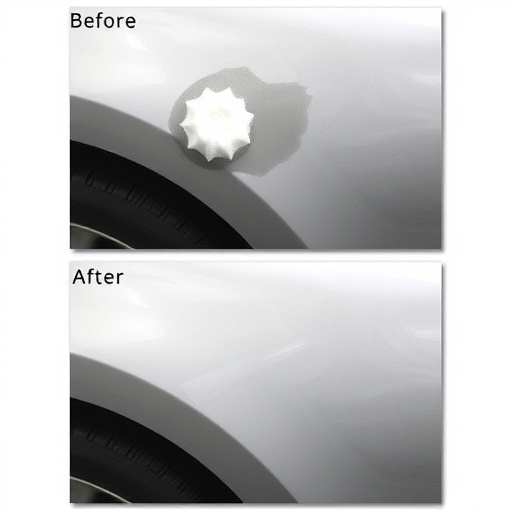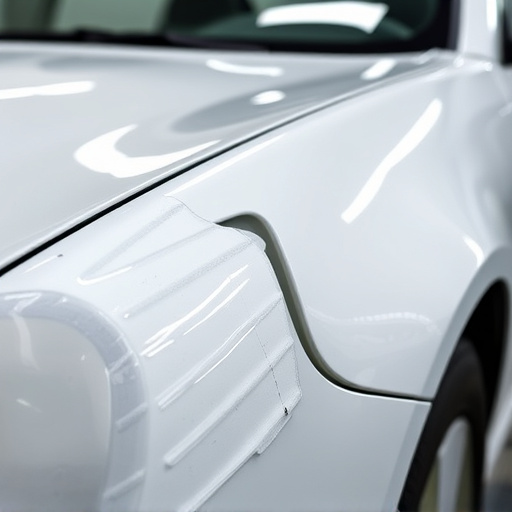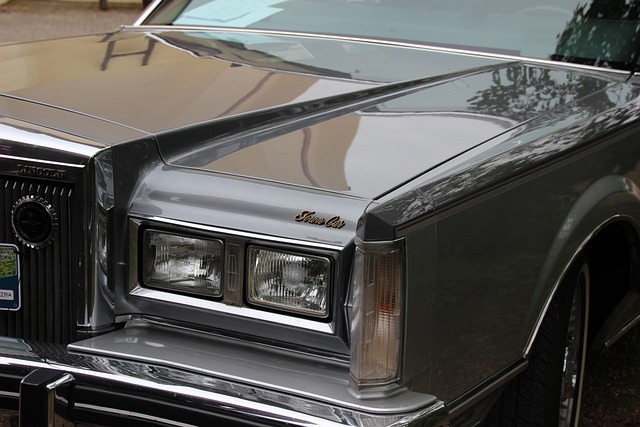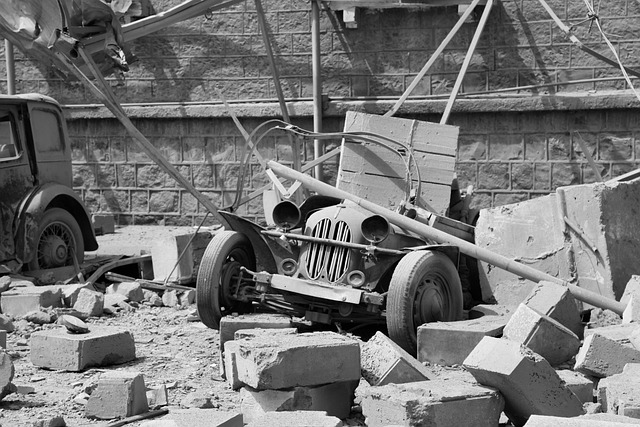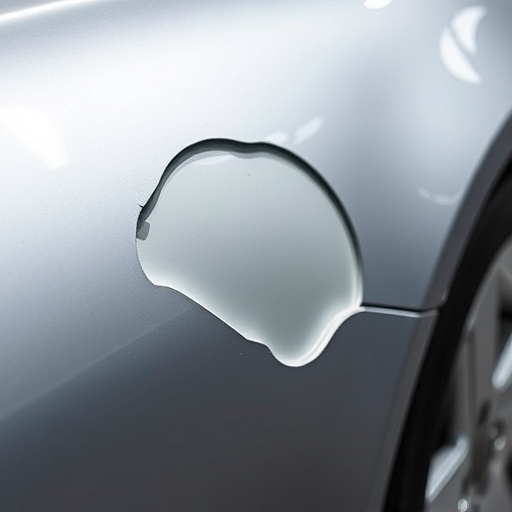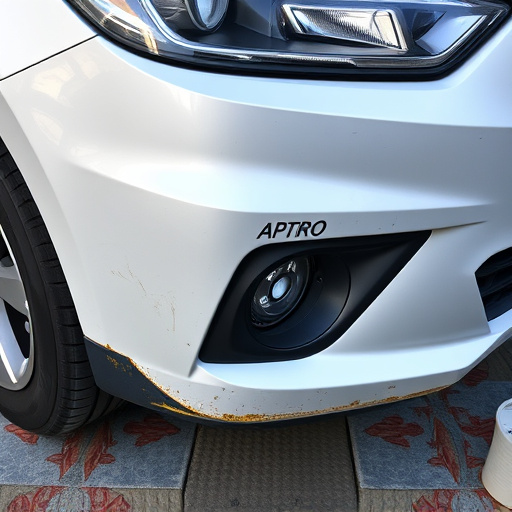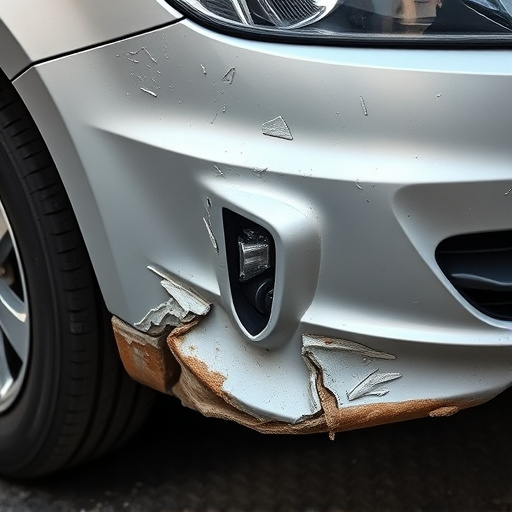Vehicle dents result from various causes like door dings, paint scratches, and collisions. Auto body professionals employ diverse tools for dent removal, with material choice crucial. Minor dents use lightweight putty or foam fillers, while substantial dents require composite materials mimicking original car body, applied with care and cured under vacuum for durability. Selection depends on dent size, vehicle condition, and desired finish, offering options like composite fillings, metal repairs, and advanced polymer materials for varied needs.
In the realm of automotive aesthetics, dent removal is an art that restores vehicles to their pristine condition. This meticulous process involves addressing a variety of dents, from minor scratches to more significant impacts, all aiming for a flawless finish. Understanding the materials and techniques employed in dent removal is key to effective vehicle care. This article explores common dent types, the materials used for repair, and guides you through choosing the best filling or replacement options for your needs, delving into the intricacies of the dent removal process.
- Common Types of Dents and Their Causes
- Materials Used for Dent Repair Techniques
- Choosing the Right Filling or Replacement Material
Common Types of Dents and Their Causes

Dents can appear on vehicles for a variety of reasons, each requiring specific attention during the dent removal process. Common types include door dings, paint scratches, and larger impact dents from collisions or debris. Door dings, often caused by shopping carts or other vehicles in close proximity, result in shallow indentations that can be challenging to detect but are noticeable upon closer inspection. Paint scratches, stemming from minor scuffing or scraping against rough surfaces, may appear as surface-level defects or deeper gouges into the paint layer.
Impact dents, caused by collisions or flying objects like stones or debris on the road, range in size and severity. While smaller dents might be merely unsightly, larger impact sites can compromise structural integrity and necessitate more intensive dent removal processes at an auto body shop. Auto maintenance professionals employ various techniques for dent removal, from simple hand tools to sophisticated machine-based methods, depending on the type and extent of damage, ultimately aiming to restore vehicles to their pre-damage condition through effective auto body services.
Materials Used for Dent Repair Techniques

When it comes to dent repair techniques within the dent removal process, a variety of materials are employed to ensure effective and aesthetically pleasing results. For minor dents and dings, a common approach involves using lightweight, flexible putty or foam fillers. These materials can easily conform to the contour of the surface, making them ideal for smoothing out small imperfections in vehicles’ exteriors. After filling, these substances harden, providing a durable base for subsequent sanding and painting steps within the auto glass repair and vehicle repair processes.
For more significant dents, especially those that have penetrated the metal panel’s depth, specialized composite materials are utilized. These advanced compounds mimic the original car body material in terms of strength and appearance. Skilled technicians carefully apply these composites, often using vacuum bagging to ensure proper curing. This meticulous process is a key aspect of dent repair, aiming to restore vehicles’ pre-damage conditions as much as possible, alongside comprehensive car repair services.
Choosing the Right Filling or Replacement Material

When it comes to dent removal, selecting the appropriate filling or replacement material is a crucial step. This decision significantly impacts both the aesthetics and long-term durability of the repair, making it an essential consideration for anyone undergoing auto body services or car damage repair. The choice often depends on factors like the size and severity of the dent, as well as the vehicle’s overall condition and desired finish.
In a collision repair shop, professionals offer a range of options, including composite fillings, metal repairs, and advanced polymer materials. Composite fillings are popular for their ability to match the vehicle’s original color and texture, making them ideal for smaller dents. Metal repairs are suitable for more extensive damage, ensuring structural integrity while blending seamlessly with the car’s existing paneling. Polymer materials, known for their flexibility and resistance to impact, offer a versatile solution for various dent removal scenarios, enhancing both visual appeal and safety in the process of car damage repair.
Understanding the materials commonly used in dent removal is key to ensuring effective repairs. By knowing the various types of dents, their causes, and the appropriate filling or replacement materials, you can make informed decisions during the dent repair process. This knowledge empowers individuals to select the best options for their specific needs, ultimately enhancing the overall quality and longevity of dent repairs.
